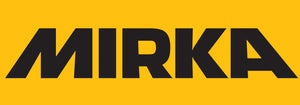
There’s nothing quite like the excitement of unboxing a brand-new bandsaw, but before you start cutting curves, there’s some setup to be done. Whether you’ve purchased a compact model for your home workshop or a heavy-duty machine like an SCM , assembling your bandsaw properly is key to safe, accurate performance. In this guide, we’ll walk you through each step of the unboxing and assembly process, highlight the tools you’ll need, and share a few tips to make the setup smoother, especially if this is your first time.
Note: While some steps may vary slightly depending on the model or brand of your machine, the general process applies to most assemblies. For example, three-phase machines might require a licensed electrician for connection and a few additional setup steps. Always refer to your machine’s manual and follow relevant safety guidelines.
What You'll Need To Unpack & Assemble Your Bandsaw
- Socket set or spanner
- Screwdrivers (Phillips and flathead)
- Utility knife or scissors
- Rubber mallet
- Allen keys/hex keys
- Clean rags or paper towels
- Degreaser or mineral spirits
- Gloves
- Safety glasses
Instructions

Step 1 - Remove Your Bandsaws Outer Covering
Bandsaws are typically shipped with protective coverings to prevent damage during transit. Depending on the brand, yours might arrive boxed in timber, heavy-duty cardboard, or another durable material. For example, the SCM S540P bandsaw (pictured throughout this article)came in a solid timber crate, offering excellent protection but requiring a bit more effort to unpack.


Step 2 - Unwrap Plastic
You can either carefully slice the plastic wrap down the middle or take the long way around like Nathan did (and walk around in circles), either way, it’s time to get that bandsaw unwrapped.

Step 3 - Remove contents from packaging
Your bandsaw components will arrive securely packaged and will require unpacking and assembly.

Step 4 - Attach Controller Switch
For the SCM bandsaw, start by unscrewing the nuts already mounted on the machine. Align the holes on the controller box with the studs on the bandsaw, hook it into place, then reattach and tighten the nuts to secure it.


Step 5 - Attach Motor & Align Pulley
This step is much easier with two people. One person should hold the motor in position from the back of the bandsaw, while the other aligns the pulley from the front. Once the pulley is correctly aligned and seated, secure the motor in place by tightening the mounting screws. Double-check that the pulley is properly positioned before fully tightening.



Step 6 - Attach Power Inlet
Remove the outer casing from the power inlet, then align the inlet with the pre-drilled holes on the bandsaw body. Secure it in place with screws. Once the inlet is mounted, reattach the outer casing.



Step 7 - Attach Table Top
Carefully position the bandsaw top onto the main body, aligning it with the pre-drilled holes or mounting points. Once in place, insert and tighten the screws or bolts to secure the top. It may help to have a second person assist in holding the top steady while you fasten it. Make sure everything is level and firmly attached before moving on.


Step 8 - Attach Emergency Stop Button
Position the emergency stop button on the designated mounting point of the bandsaw body. Secure it in place using the provided screws, ensuring it’s firmly attached and easily accessible during operation.

Step 9 - Unwrap Table Top & Clean
Remove any plastic or protective wrapping from the bandsaw table top. You'll notice a light (or heavy) coating of protective oil on the surface, this is applied at the factory to prevent rust during storage and shipping. Use a clean cloth or paper towel to thoroughly wipe down the table, removing all oil before use. For stubborn residue, a small amount of mineral spirits or degreaser can help.


Step 10 - Attach Bandsaw Fence
Before installation, wipe down the fence and mounting rail to remove any protective oil or residue. Once clean, align the fence with the mounting slots or rail on the bandsaw table. Slide or position the fence into place according to the manufacturer’s instructions, then tighten the locking mechanism to secure it. Ensure the fence moves smoothly and locks firmly along the rail.

Step 11 - Install Bandsaw Blade
Carefully uncoil the bandsaw blade, it will be tightly wound, so take your time and wear gloves for safety. Once uncoiled, slide the blade into the machine, positioning it over the top wheel and under the bottom wheel. Make sure the teeth are facing the correct direction (downward toward the front of the table.)


Step 12 - Tension Blade
Once the blade is properly seated on the wheels, it’s time to apply tension. Use the tensioning knob or lever, usually located on the top of the bandsaw, to gradually increase tension until the blade is firm but not over-tightened. Most bandsaws have a built-in tension gauge to help you match the setting to the blade width. Proper tension is critical for accurate cuts and safe operation, so refer to your machine’s manual if you're unsure.

Step 13 - Align The Blade On The Wheel
With the blade tensioned, check that the blade is centred on both the top and bottom wheels. Slowly rotate the top wheel by hand to ensure the blade tracks smoothly and stays aligned in the middle of the wheel crown. If the blade drifts forward or backward, adjust the tracking knob (usually located behind the upper wheel) until the blade runs true. Proper tracking helps prevent the blade from slipping off during operation.


Step 14 - Adjust Guide Bearings
Start by adjusting your guide bearings so they sit close to the blade, without touching it while it's running. Begin at the top by setting the side bearings first, followed by the rear bearing. Then repeat the same process for the lower guide bearings.
Step 15 - Get Your Bandsaw Connected (or plug it in)
To complete the setup, have a licensed electrician connect your bandsaw to power (if 3 phase, or plug in if already supplied with plug). This ensures the machine is safely and correctly wired to meet local electrical standards. Do not attempt to connect the machine yourself unless you are qualified, improper installation can pose serious safety risks and may void your warranty. Once connected, your bandsaw is ready for calibration and use.

Assembling a new bandsaw might seem daunting at first, but with the right tools, a bit of patience, and a step-by-step approach, you’ll have your machine up and running in no time. Taking the time to properly unbox, clean, and set up each component ensures your bandsaw performs safely and accurately from the start. Don’t forget, always consult your manual for model-specific instructions, and have a licensed electrician handle the final power connection. Once everything is set, you’ll be ready to make your first cut with confidence. Enjoy the process and happy sawing!
The Hammer Roo Team



















